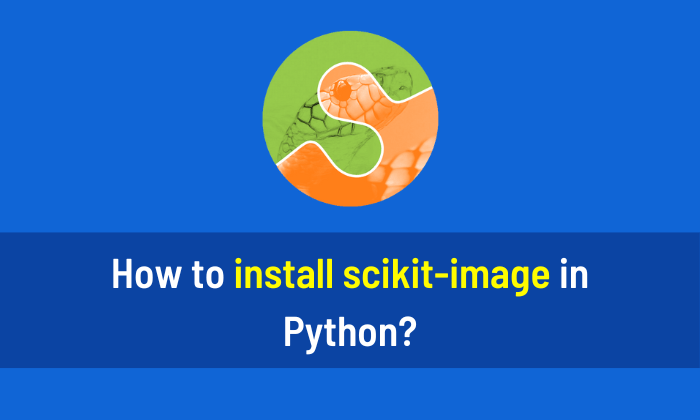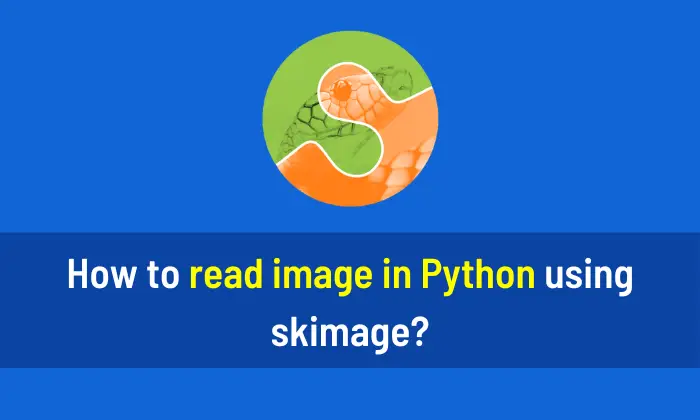Computer vision is a branch of Artificial Intelligence (AI) that is used to extract important data from digital images, videos, and animations. You can say CV makes the computer work as an “Eye”. If you want to learn Computer Vision then I will highly recommend you to read This book.
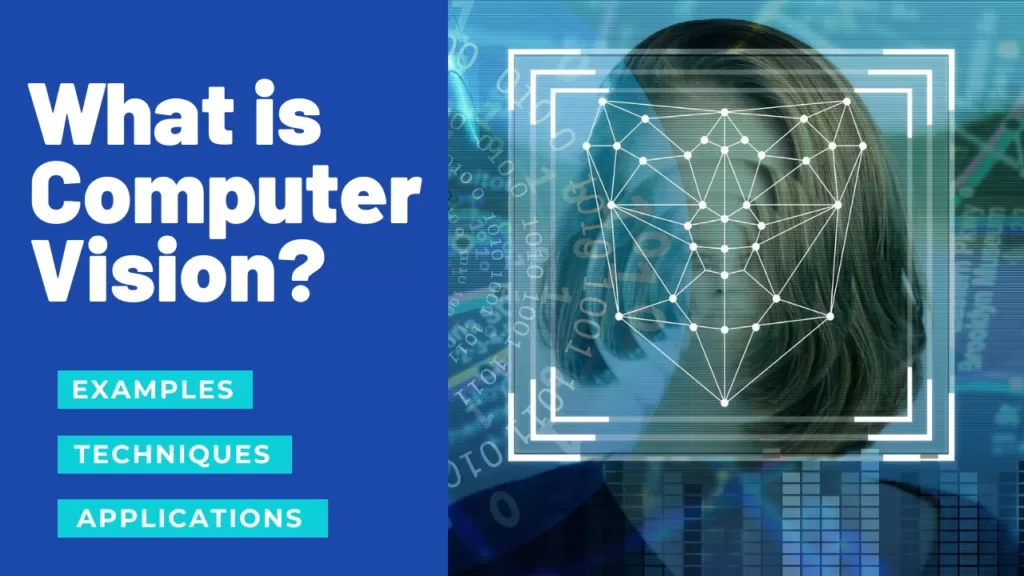
The concept of computer vision is built on the instruction of computers to process and understand an image at a pixel level. Technically machines try to collect, manage, and analyze visual input by using particular software algorithms.
Computer Vision Examples
There are a lot of examples of computer vision. Computer vision technology exists in endless applications. Here are some of the best examples of CV:
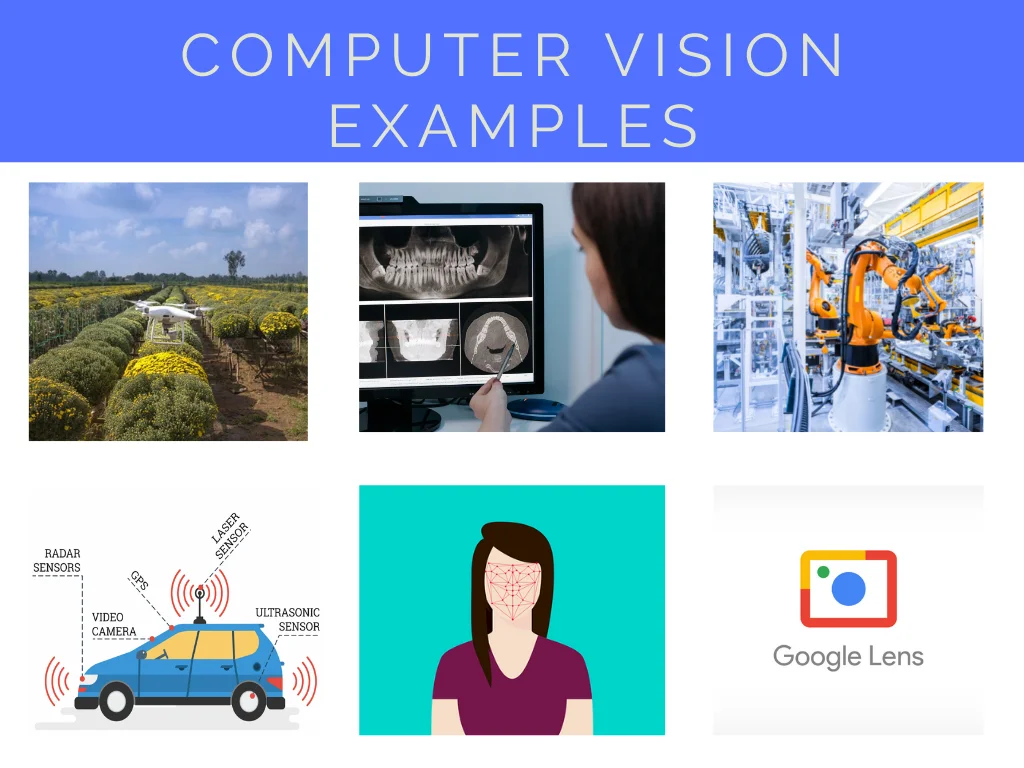
- Google Lens
- Quality Inspection (Manufacturing)
- Traffic Flow Detection
- Cancer Detection
- Real-time sports tracking
- Crop Monitoring (Agriculture)
- Google translate app
- Facial recognition
- Autonomous vehicles
How Computer Vision Works?
Vision is one of the essential elements of the human body. The same goes for computers as computer vision enables the computer to see things or it provides the vision to the computer. Machines must gather, interpret, analyze and understand the images as the human eye do. This is huge progress in computer science as it is made possible by the iterative learning process with neural networks.
Most of the computer vision techniques are based on pattern recognition. A large number of visual images are sent to the computer for processing. Then, the computer finds the patterns that are common in those images. A computer creates a model of things after finding patterns in images. For example, hundreds of thousands of flower images will be used as an input to the computer, it will discover common patterns of all flowers in all images and will construct a model of a flower. By doing so, the computer will accurately recognize the image containing a flower or not.
Why computer vision is important?
Computer vision is very important for today’s world. In today’s world, computer vision is incredibly significant. It’s used in nearly all departments. Companies use this technology to identify, recognize the face, analyses crowds, optical character recognition (OCR), and many more. Objects, people, or any other thing can be identified or verified through computer vision. Computer vision is also used in the security department to find suspects through facial recognition.
Applications of Computer Vision
There are many applications of Computer Vision but it is not possible to write all the applications of CV at once. I will show you some applications of Computer Vision here.
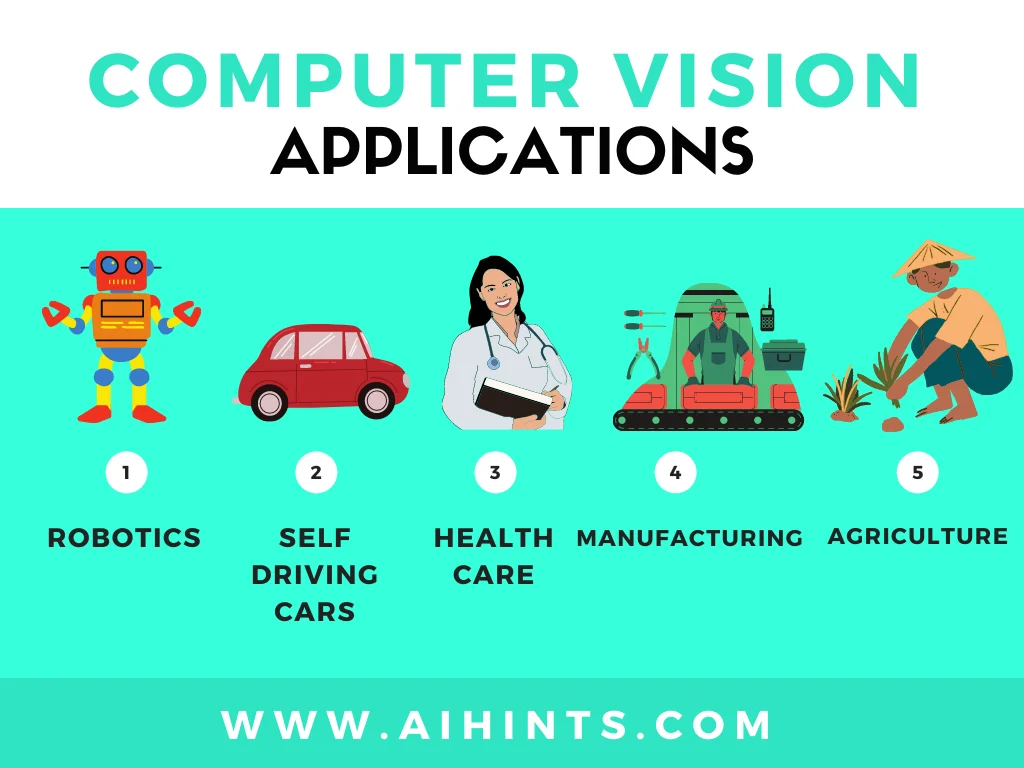
1. Computer Vision in Robotics
The most essential and highlighted application of computer vision is present in robotics. This is a practical application that is totally base on computer vision. Many robot’s working phenomenon involves computer vision for exploring volcanoes, space missions, in medical sciences for surgical assistant, in factories to minimize the manpower for better efficiency.
In robotics, it is called Robotic Vision. Generally, robotic vision means a camera and computer algorithms, or software through which the robot process the visual image/data. There are some applications where robotic vision is essential otherwise the robot is blind.
2. Computer Vision in Autonomous Vehicles (self-driving cars)
Self-driving automobiles require computer vision. Automobile companies are investing millions of millions in this technology. Self-driving automobiles are one of the most challenging applications of CV.
Qualitative computer vision solutions in autonomous vehicles can be a life or death issue, whether it is for the driver or other road users. In past lane lines on the road, even those that were curved could be found using traditional computer vision. OpenCV library and pixel color analysis are used to create a suitable form. For navigation, self-driving cars can only use vision-based sensors. The autonomous automobile will become more affordable and safer in the coming future.
As science progresses, new algorithms will be added to the system making it more complex in real life, and it will also affect a car’s performance. A car’s performance in bad weather will also be different, so this event will also be under-study. Manufacturers such as Tesla and BMW utilize to capture images from the surroundings, their self-driving cars can safely detect objects, lane markings, signs, and traffic signals to drive using cameras as well as lidar radar and ultrasonic sensors.
3. Computer Vision in Healthcare
If someone wants to see the practical impact of computer vision in the real world, healthcare is the best example. There is so much involvement of computer vision in the medical field. Many software, machines, robots, and medical gadgets use computer vision.
Oxipit is a software based on Computer Vision that provides healthcare providers with computer-assisted reporting. Various medical operations, such as diagnosis, pathology localization, lesion segmentation, and volumetric evaluation, can be generated automatically with the help of computer vision. The system generates reports on its own based on the photos’ content, CT, X-rays, and MRIs. This saves medical doctors a lot of time because they don’t have to spend time analyzing the photographs. DeepOncology is a medical startup that specializes in tumor detection, utilizing transcriptional profiling on micro-arrays to acquire gene expression. Early signs of disease can be detected using computer vision because of its finely calibrated pattern recognition capability.
- Computer Vision for Medical Imaging
A convolutional neural network (CNN) is a powerful tool for learning useable representations of pictures and other structured data. Until CNNs became efficient, these features had to be developed manually or by a less capable medical instrument. By looking at CNNs that are based on computer vision, we can better understand why they are so powerful.
By extracting, evaluating, and displaying the structural and functional features of biological tissues, computer vision approaches specifically fitted to multidimensional and multi-spectral MR data can dramatically increase the analysis. With the use of short-text categorization powered by computer vision, convolutional neural networks (CNN) can be utilized to increase radiology practices’ efficiency.
ADAS 3D is a medical imaging platform by which doctors may see fibrosis in the heart, as well as the wall thickness and surrounding anatomical features. After MRI and CT scans, this software-based image processing technology is utilized to enhance the images to further comment on the situation on the patient’s health. Because of the specific properties of medical images, computer vision faces a variety of obstacles.
4. Computer Vision for Manufacturing
Computer vision has become the most popular over the last decade and has aided a variety of industries, particularly manufacturing. Using computer vision in warehouses and contemporary robotics in R&D labs, technology is experiencing a substantial impact on the production process at every level of the process.
Through technological developments in manufacturing, they have helped to minimize production flaws, improve product quality, and increase flexibility while decreasing time and costs and generating increased productivity. There are some uses of CV described below:
- The most crucial production operations that should not be overlooked are product inspection and quality control. To calculate the number of capsules in a bottle after manufacture, the industry uses a computer vision-based inspection system. If a tablet is defective, the system sends a signal to reject it at the last stage of a packaging line..
- Machine learning and computer vision are used to predict when asset management is required. This enables the producer to extend the life of the equipment while decreasing performance.
- Optical Character Recognition (OCR) technology is used in industries to make real-time data in imagery data that is usable and readable. It is used to recognize classic 1D and 2D barcodes to automatically route components to a specific production line.
- On the production line, a computer vision-based inspection system was installed to detect very small connector pins. Manual inspectors have a hard time finding these little pins. If the defective connector pin makes it through the manufacturing process, the vehicle owner and manufacturer are alerted of the danger.
5. Computer Vision in Agriculture
In today’s modern and innovative age, our lives are rapidly transforming. Our wildest imaginations can’t even begin to fathom the possibility of such technology. There has been a tremendous impact across industries due to the arrival of modern technologies such as computer vision. In recent years, computer vision has begun to be used in agriculture.
Agriculture is the economic sector that distinguishes any country in the global market. The export market is controlled by those countries that have abundant production by farming. However, high labor costs, poor techniques, and a lack of automation result in higher manufacturing costs in various countries.
Several contributions of computer vision models to the agricultural business have been put in planting, harvesting, advanced weather analysis, weeding, and plant health detection and monitoring. Some of them are summarized below:
- Drone-based crop monitoring – With its geo-sensing capabilities, the computer vision-enabled camera can be installed on a drone to detect bad situations, crop health information, an aerial picture of the entire farming land, and identifying soil conditions. Semantic segmentation and picture annotations are methodologies for detecting and identifying a certain object.
- Smart systems for crop grading and sorting – In agriculture, computer vision machines are in high demand. It is becoming an essential component because smart systems can determine the lifetime of crops and determine the number of viruses in the crops, resulting in less crop damage. Fruits and vegetables are assessed according to their quality to determine which batches should be delivered first and which can last longer.
- Livestock – The majority of agriculture and farming revolves around livestock. To gather essential information on harvesting quality, computer vision can recognize animal count, health, and growth.
- Smart farming – The concept of autonomous tractors for executing plowing-related operations without human intervention is gaining pace in computer vision and AI research.
- Phenotyping – Computer vision algorithms are combined with image processing features to remove unnecessary crop data or information from photos, leaving just the relevant information on precise measurements. This knowledge has significantly improved crop breeds.
Computer Vision Techniques
There are many techniques of CV but the most important ones are described below:

- Image Classification – Image classification is an area in the field of computer vision in which an algorithm looks at an image and assigns it a tag from a library of predefined tags or categories that it has been taught on. Meaning that we have to examine an input image and then return a label that categorizes it.
- Object Detection – Object detection is a computer vision approach for identifying and locating things in images or videos. Using this type of identification and localization, object detection can be used to count objects in a scene, determine and track their precise locations, and precisely label them.
- Object Tracking – It is an algorithm that uses cameras to capture a scene to follow the displacement of one of several specific items. If only one object is visible in the video sequence, tracking an object can be as simple as detecting it in each frame and computing its displacement.
- Facial Recognition – When a person’s face is used to identify or verify their identity, it’s called facial recognition. Based on a person’s face details, it captures, analyses, and compares patterns of behaviour. It’s a crucial step in recognizing and locating human faces in photos and movies.
- Pattern Detection – Pattern recognition is a neurological process that occurs in our brain when we match facts stored in our memory with information we experience. It is a computer vision approach that matches the information contained in the database with the incoming data in computer science.
Frequently Asked Questions:
- Is computer vision part of AI?
Yes, computer vision is a part of artificial intelligence. It is the application of AI which is applied to the real world.
- Computer Vision vs Machine Learning
CV is used for the visualization of real-world’s data in the form of a digital image. Machine Learning techniques are used in computer vision to solve different problems. We can perform only visual tasks using computer vision but machine learning is used for different types of data such as text, numbers, audios, and also images.
- Computer vision vs machine vision
CV is used for the processing of image analyzing while machine vision is used to view an image. It does not process the image but the CV does.
- Computer Vision vs Human Vision
Computer vision is a term that is used in the computer world. It is an eye of a computer system to see and process the image. Human vision is multi-tasking but computer vision is task-oriented. Human Vision is limited to visible patterns but computer vision can work in invisible patterns. In medical diagnosis, computer vision performs much better than human vision.
- Computer vision vs NLP
Natural language processing is used in computers to communicate with humans in their language. NLP interprets the human message into computer language while computer vision only processes the image to the visual world.
- Computer vision vs image processing
Image processing is a technique of CV which is used for the processing of images by finding similar patterns in them.
- Computer vision and image understanding
Image understanding is the sub-field of CV that is used for analyzing regions/objects to figure out what’s in the image.
- Computer vision and pattern recognition
Pattern recognition is an application of computer vision that applies machine learning techniques to detect patterns and regularities in data.

